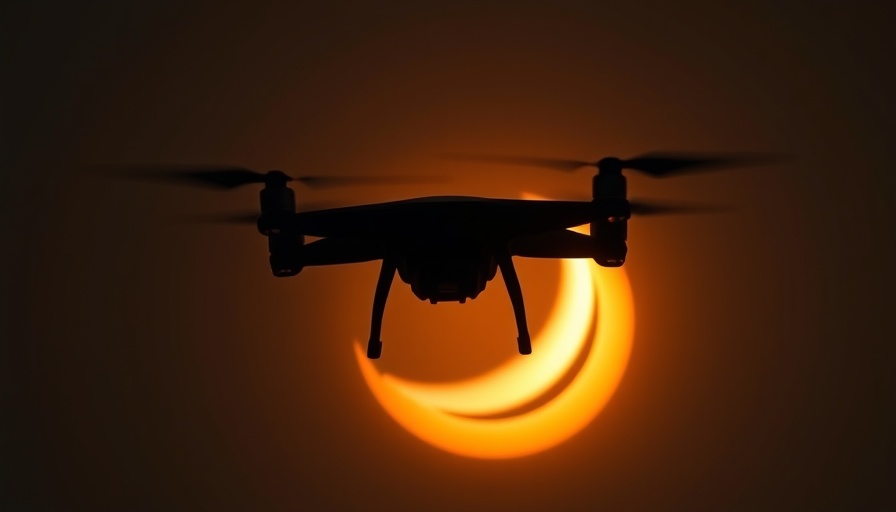
Understanding Taiwan's Urgent Drone Manufacturing Drive
As global conflicts increasingly integrate drone technology, Taiwan has found itself at a pivotal moment. The need for a robust domestic drone industry has become accentuated by the escalating military threats from China, positioning Taiwan in an urgent race against time. With a projected annual production goal of 180,000 drones by 2028, Taiwan faces significant structural challenges in manufacturing and production capacity. This is critical given that last year saw fewer than 10,000 drones produced, raising concerns about whether this ambitious target is achievable.
Historical Context: Global Drone Warfare and Its Impact
The journey toward militarized drones comes from decades of conflict where UAVs have demonstrated their effectiveness on battlefields. From the ongoing Ukraine crisis to engagements in Iran and conflicts in Nagorno-Karabakh, these unmanned vehicles have transformed modern warfare. Taiwan's predicament isn’t just about manufacturing drones—it’s about ensuring national survival. As Cathy Fang, a policy analyst at the Research Institute for Democracy, Society, and Emerging Technology (DSET), highlights, the island has the potential to lead in advanced drones. Yet, the fear of Chinese aggression looms large, with potential timelines for invasion cited as early as 2027.
Financial and Structural Hurdles Facing Taiwan’s Drone Initiative
Taiwan's dream of becoming a drone manufacturing powerhouse faces several financial and structural roadblocks. High manufacturing costs join a lack of domestic procurement and minimal foreign orders, creating a bottleneck in production capabilities. Fang’s report points directly to these deficiencies, asking critical questions about Taiwan's industry structure and responsiveness to market needs. Without a significant change to these parameters, the ambitious production goals risk being more optimistic than realistic.
The Strategic Importance of Drones in National Defense
Drones play an essential role in Taiwan’s defense strategy. The concept of transforming the Taiwan Strait into a “hellscape” for incoming forces relies heavily on drone technology to disrupt Chinese naval and aerial advances. This tactical approach does not require Taiwan to outright defeat China's military strength; rather, it is about creating a defensive environment capable of absorbing and delaying assaults until international allies can mobilize support.
Collaboration Between Government and Industry
To aid in the development of its nascent drone industry, Taiwan's government has initiated the Drone National Team project. This collaborative effort brings together technological expertise from both government and civilian sectors, enabling happier solutions that accelerate production. Looking towards the successes observed in Ukraine, the urgency to develop a comprehensive drone strategy becomes more apparent. The application of lessons learned from global conflicts can catalyze innovation within Taiwan’s framework for drone production.
What Lies Ahead: Future Predictions for Taiwan’s Drone Program
The future of Taiwan's drone program hinges on overcoming current challenges and effectively leveraging international partnerships. As technological advancements evolve rapidly, Taiwan must not only focus on manufacturing but also invest in research and development. Key elements to watch for include improved procurement strategies while fostering a competitive market that encourages innovation. Taiwan's drone capabilities could have ripple effects, influencing broader regional security dynamics in the Asia-Pacific.
In conclusion, as Taiwan embarks on this critical venture, the intersection of technological development, strategic defense, and international collaboration will not only shape its immediate future but resonate well beyond its borders.
For business professionals and industry leaders, understanding Taiwan's drone ambitions presents compelling insights into how technology and strategy intertwine in real world scenarios. Staying abreast of developments in the drone industry could provide essential lessons applicable across various sectors.
 Add Row
Add Row  Add
Add 




Write A Comment